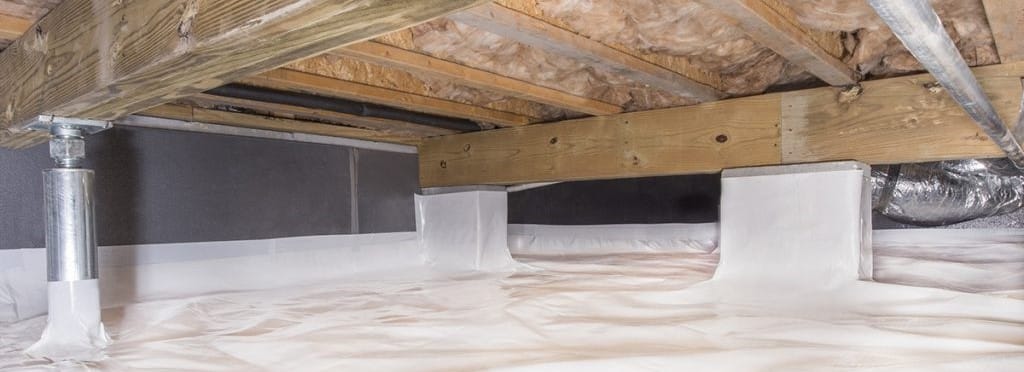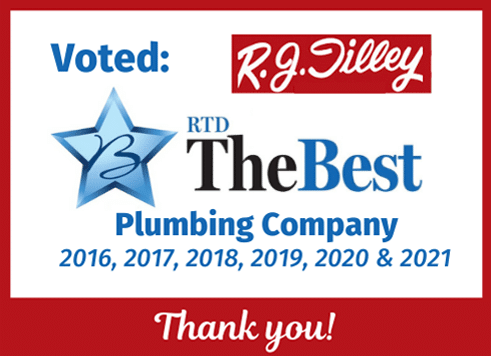Most homeowners have no desire to slither underneath their home to explore the dark underbelly that is the crawl space. In just a few feet of wiggle room, you’ll come across exposed ductwork, pipes, beams and certainly face your fair share of dirt, maybe even some pesky invaders. Although your crawl space is no place you want to be, it’s important for the overall comfort, safety and efficiency of your home to know what’s going on down below.
At some point during the course of buying your home you probably had a professional come out to conduct a home inspection. This included a check of the crawl space for things like ventilation, insulation, barriers, water damage, mold, etc. Unless problems were brought to your attention at that time, you moved on in and assumed all was well. What you may not realize is that over time houses settle, moisture seeps underneath becoming trapped, and dry rot can start to develop. If you don’t conduct periodic checks of your crawl space you’ll have no idea if these expensive repairs are brewing. Luckily, there are a few warning signs something could be wrong.
Crawl space culprits
High indoor humidity — Ever see droplets of water dangling from ceiling or condensation forming on walls? This is a sign indoor humidity levels are too high. High indoor humidity signifies there is moisture in the crawl space. This can be caused by a number of factors like open vents, dirt in the crawl space and wet, soggy weather.
Sagging floors — Do any floors in your home squeak, or appear uneven? These aren’t just characteristics associated with an aging home. It may suggest that the interior support system and floor joists are unable to safely support the load of the home. Sagging, uneven, squeaking floors occur due to foundational problems, water seepage and other damage in your home’s crawl space.
Musty odors — Notice a musty, foul smell inside especially on hot and humid days? If your crawl space isn’t sealed and conditioned properly it allows mold, moisture and organic materials to enter— the three components needed for mold to flourish. Harmful to people, pets, and your home’s overall structure, mold is a serious problem that needs to be remediated as soon as possible.
High energy bills — Is your electrical bill higher than normal? While high monthly bills may result from a number of HVAC-related issues, it’s also suggestive of something going on in the crawl space. It’s natural for the air conditioning to use more energy to keep you comfortable on extremely humid days, but characteristics of your crawl space can also contribute. Unconditioned, dirt crawl spaces could cause your heating and cooling systems to go into overdrive.
Climate and crawlspace
By now, we’re sure you’ve noticed a correlation between moisture and crawl space problems. More often than not, humidity plays a big role in the most common, and most serious, crawlspace issues. In our service area, we have what’s called a “goldilocks climate”—not too hot, not too cold, but we get very humid summers due to water from the Chesapeake Bay, Atlantic Ocean and numerous rivers and their tributaries. Our climate is the perfect breeding ground for moisture—which is the primary culprit for crawl space problems.
Related: What to consider before hiring a plumber
Preventative measures to maintain your crawl space
Crawl space maintenance is critical to keeping your home and your family safe, as well as controlling how much energy bills are impacted. Maintenance focuses around an inspection and preventative measures that can be taken to ensure your crawl space is properly outfitted to resist moisture. Here are some of the components of a healthy, conditioned crawl space:
Ventilation — Not only should vents in the foundation be properly placed to ensure air flow, but there are best practices, depending on your climate, for the times of year they should be open and closed.
Vapor barriers — Covering the ground completely, when it’s dry, and weighing it down is suggested to combat groundwater issues that can lead to moisture seepage and mold.
Drainage — Sump pumps and other drainage systems are oftentimes necessary to intercept moisture before it surfaces above ground level. Since water can pool up to several inches before reaching the sump pump, drain pipes are recommended to catch water before it pools and lies stagnant.
Related: Proper drainage in our home’s exterior drains
If your home’s crawl space is neglected, you’re not alone. For many homeowners the crawl space is out of sight, out of mind. If you do notice any warning signs of crawl space trouble, don’t ignore them, or you may end up with a space infested with moisture, mold or other harmful (and expensive!) crawl space problems.
Contact R.J. Tilley for more information on how you can protect your home with crawl space maintenance.








